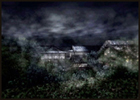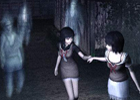Fatal Frame II – Crimson Butterfly
| Rei ~Zero~ | ||
| Also Known As: Project Zero (EU and AU) | ||
| Genre: Horror | ||
| Platform(s): PS2/X-Box | ||
| Allegiance: Tecmo | ||
| Vintage: 2001 | ||
| Rating: T | ||
| Intelligence Agency Report by: Mana | ||
| When her brother Mafuyu disappears, Miku Hinasaki brings herself to explore the place he was last known to be, the derelict Himuro Mansion. As she wanders further and further within its walls, Miku uncovers the dark secrets that died along with the house’s inhabitants. And as Miku learns more about the terrible past of Himuro Mansion, she realizes that she is being forced to relive it… | ||
|
|
||
| Weapons Expert Report by: Mana | ||
| Story/Premise Gameplay Impact Visual Audio |
9.00 7.50 9.00 8.50 10.00 |
|
| Overall | 9.00 | |
| (not an average) | ||
| Version Reviewed: Playstation 2
This game scared me. That might not seem like a big deal, really, unless you know me. I don’t scare easily. Even as a kid, I remember having sleepovers and watching movies like Psycho and Candyman and laughing my way through them while my friends hid and cried. Yet, this game scared me; and to my knowledge, it is the only entertainment in any sort of media that has ever scared me. I’m not talking screaming-you-lungs-out scared, more the deep, in the pit of your heart and at the nether-regions of your soul scared, the kind of scared where you go outside after playing the game and realize that you’re still shaking. Though, I must digress, as this game is not just a horror game. Indeed it has plot and characterization, and the best audio of any game I’ve ever heard (as long as you ignore the voice actors). Every floorboard creak and near-silent moan is timed well, slowly building up until something happens. Slight shifts in lighting, sound, and vibration could mean something deadly is coming, and the slow buildup can only leave you guessing. Miku, your main character, is really your only, er, living character in the game. Yet, as she travels and learns more about the house and the ghosts that haunt it, you also learn about the spirits that you fight, so that they become actual characters with motive and emotion. The plot is imaginative and absorbing, flitting between different families and lives, all bound by the mysterious Strangling Ritual. The game flows more like a movie than a game. Not much time is left to blindly wandering (unless you take time for it yourself), but rather you’re always moving through the story, fitting pieces together. Finally, even after you complete the game, there’s more for you to do: ghosts to kill, costumes to unlock, and “Nightmare” mode, where ghosts do twice the damage and have twice the HP. Fighting, yes, did I say fighting? Throughout the entire game you get to fight spirits, using a camera as your only weapon. Taking pictures of the ghosts brings you up close and personal with these apparitions; there is no running away, and not really much in the way of long-distance attacking. Through photos, you “exorcize” the sprits, draining their spiritual energy as if it were hit points in an RPG. Extra items, different types of film, and special shots allow you to do more damage The graphics are done rather well, especially where the ghosts are concerned. The biggest problems with graphics in relation to game play are the weird camera angles you get stuck in every once and a while. For example, walking through a hallway on the second floor of the mansion may be shown from a shot from the first floor looking up at you. It is a neat shot, cinematographically, but while trying to control the character, it makes no sense whatsoever. Outside of that, the flaws in the game are miniscule and easily overcome. Some people have complained about the game being “too hard,” but as long as you read and practice with the camera, getting used to the different types of shots and film, the difficulty really doesn’t exist. You just have to be willing to try and be good at the game. The voice acting is definitely not the best, but 80% of the speaking for the entire game is done in the first 10 minutes, so it isn’t an issue as the game progresses. Fatal Frame is definitely Japanese horror. The entire game seems permeated in Japanese culture, from the ancient rituals of days gone by, to the koto you can sometimes hear playing, to the lost inhabitants of the house themselves. In some ways, this Japanese feel is probably what kept the game from doing even nearly as well as the explosive success is was in Japan. Even now, the game is somewhat hard to find on Playstation (minimally easier for the XBox version), but it’s a game worth hunting for.
|
||




